Interview with Kei Murayama & Fumitoshi Oizaki, the original author of 'Centaur's Trouble', which is not just 'daily anime of girls with various shapes'

Broadcasting of the TV anime '
[Official] TV Anime 'Centaur's Trouble' PV --YouTube
GIGAZINE (hereinafter, G):
The work 'Centaur's Trouble' is packed with various elements such as a school-like atmosphere and science fiction. When I read the work, I think that it's just about school, and sometimes there are episodes that aren't, but how do you decide the order of the episodes?
'Centaur's Trouble' Original author, Kei Murayama (hereinafter referred to as Murayama):
I am thinking about the overall balance. Basically, it's a 'bright story about a girl coming out', but it feels like a little bit of a mix of war stories and horror stories.
Anime key visuals that are perfect for the basic 'girl comes out and bright story'
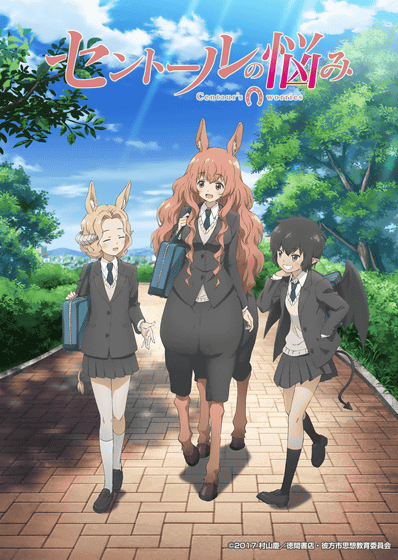
G:
Is it a feeling that we should put a soft story after a severe story?
Murayama:
Basically it is. From the reader's point of view, there are also people who want to read only the bright stories of girls, so it's still a balance.
'Centaur's Trouble' General Director Fumitoshi Oizaki (hereinafter referred to as 'Oizaki'):
Have you decided to make the episodes around here like this?
Mr. Murayama & General Manager Oizaki
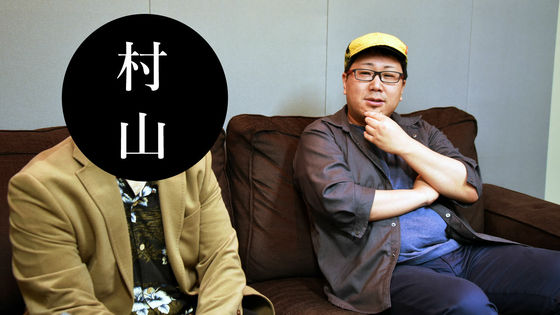
Murayama:
From about 3 volumes, I started thinking about 'let's put about 60% of bright school things in this volume'.
Oizaki:
Do you feel like thinking in a group of comic volumes?
Murayama:
Yes. Occasionally, it may be out of the question that 'this time there was too much of this'. However, I had decided from the beginning that Susasu Sur would come out in 4 volumes.
G:
The chairman has a triplet sister, but when I read it, it has a vividness that reminds me of my brother. Does anyone have a model?

Murayama:
I'm not a model, but I have a younger sister, so I remember my childhood ...
G:
Is it an image of fleshing out old memories as the core?
Murayama:
I agree. After that, all the characters of 'Centaur's Trouble' are the same, but I make it based on 'If you are a child, you will think like this' 'If you are born like this in such a situation, you will think like this' ..
Oizaki:
Even so, it's real. I absolutely thought that this was a real experience.
G:
I felt it was insanely real. Why is that a triplet?
Murayama:
There is a work called ' Butkura-chan ' by Yoshimi Nakase, who often appears in the committee, and it's a manga in which twins each give birth to twins, and each of the four children is a quadruple, for a total of 16 people. , I'm drawing the fun of having 16 children who look exactly like me. Certainly that was in mind.
But Kura-chan (Ryu Comics) | Yoshimi Nakase | Books | Mail Order | Amazon
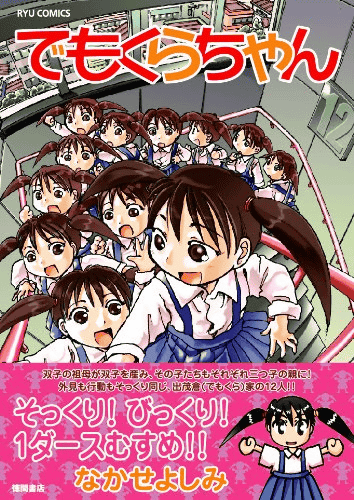
G:
So that's it. In an interview published in Tokyo Manga Lab that I read in advance this time, in response to the question 'Is the setting of the world view summarized as a material?', 'No, I have everything in my head.' You answered, 'I won't write a plot,' but is that still the case?
Murayama:
I don't write a plot.
G:
Wow ... why can you draw such a complicated story without drawing a plot?
Murayama:
This is because plotting is a lot of manual work. As with the name, it takes a couple of days to draw, but of that time, I spend about 30 minutes thinking about things, and most of them are simple manual labor.
Oizaki:
Is there something like a memo of the whole work?
Murayama:
There is nothing in particular.
Oizaki:
Isn't that also? I was wondering if there would be a world view note.
G:
Is it faster to refer to what is in your head without making something like a collection of setting materials or doing the 'physical work' mentioned earlier?
Murayama:
That is one too. After that, if the character is different from the world view, it is a symbolic enumeration, so it is absolutely necessary to make a note. It's like remembering a phone number or remembering an era ... Symbolic memory is completely useless for me. However, there is no need to remember the story because the character is made from the world view, or 'Because the world is like this, the character should be shaped like this'.
G:
It looks like a math formula. Do you have the image that the world is in your head from the beginning and then you output it?
Murayama:
I agree.
G:
That kind of work is created from there. When I saw the answer to the interview, 'I want to explain as much as possible with pictures instead of explaining the setting things with lines,' I was wondering, 'Usually it's not that easy, but why can I do it?' However, the world of work is spreading in my head.
Murayama:
Does it feel like there is a 'principle'? In this world, society moves on this principle, and everything can be thought of by expanding from there.
G:
In the world of 'Centaur's Trouble', it was previously answered that there is an idea that 'everything must be equal' as a base. Why did this idea come out?
Murayama:
Simply put, 'it's better to win.' I think that the story of Napoleon came out in the middle, but in the end, rather than discriminating and making slaves, the result is that the country that released it and cooperated is simply stronger, stronger as a national power. Because it has happened.
G:
So, did you think about something like Napoleon's story before you drew it?
Murayama:
I agree.
G:
In that way, I think that there are things that I had in my head from the beginning and parts that I came up with and added while drawing, but how much part of the work I was thinking from the beginning. Shall we?
Murayama:
I often flesh it out on the spot, but since it has been decided from the beginning what kind of principle society works and what kind of principle world history works, I just follow it.
G:
How did you come up with the idea of 'let's put in this kind of thought'?
Murayama:
In the part of what kind of world is formed based on what kind of thought, we refer to the actual world history. The reason I first wanted to draw a historical object is because I can refer to the actual history, but since history has already happened, there is also reality. Besides, you can pick up all-you-can-eat material and you can't run out of material (laughs).
G:
I see (laughs)
A scene to study 'human origin' also appears in the work

Oizaki:
Was it made like this if you replaced the contents of the history of the world?
Murayama:
That's right. It means that if you replace the principle in world history with something else, it should work like this.
G:
I had the impression that you are drawing the history of the world, the history of Japan, and the history of various countries in every direction. Do you like the history itself? Did you have any chance to like it?
Murayama:
I like it. There is no particular reason.
Oizaki:
If you notice it, you might like it.
Murayama:
I agree. When I was in elementary school, I was really into Sangokushi. I don't know if it's nationwide, but it was popular in all classes.
Oizaki:
There were always some people in the class who were familiar with the Romance of the Three Kingdoms.
G:
I was there.
Murayama:
When we were children, we were just doing 'Ningyogeki Sangokushi' on NHK, and in the case of manga, there were things like Mitsuteru Yokoyama and 'Eating the heavens and the earth', so there were a lot of people who liked Sangokushi.
G:
So that's it. Once again, this time, 'Centaur's Trouble' will be animated. What did you think when you first heard that story?
Murayama:
At the time of the talk, there were up to 13 volumes, so I felt like 'Is it now?' (Laughs)
G:
Do you have any impressions of the process of making the animation?
Murayama:
Somehow ... I don't think I'm so enthusiastic (laughs) I didn't know how to make an anime at all, so I feel like 'Oh, that's what it is.'
Oizaki:
I have them come to the dubbing site every week, but I always smile and watch them, and I look sideways and think 'I'm glad'.
Murayama:
It's a little interesting, isn't it? There is a gap between what I draw in manga and what I say in anime, such as 'This is surprising' or 'It's different from what I expected, but which one is more interesting'. This time, Qiang's voice is different from what I thought, but I think it's interesting and nice.
Himeno Kimihara of the Centaur (human horse)
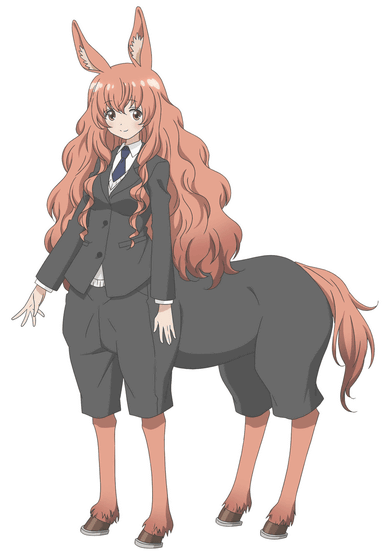
Ryujin no Jigaku Nozomi
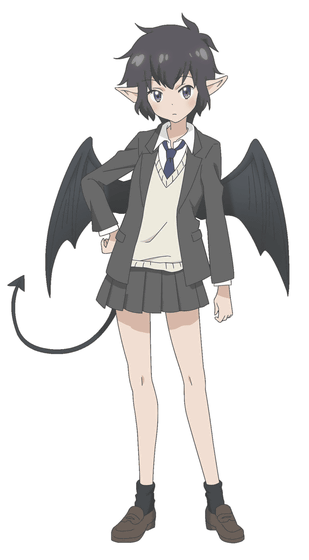
Kakuto's Meiraku Ryoko
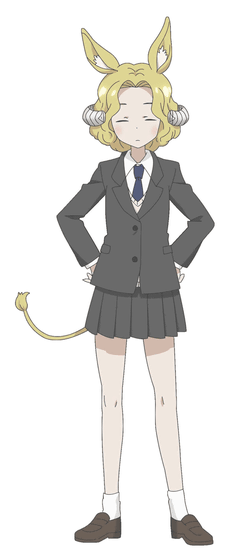
Manami, the soul of Tsubasa
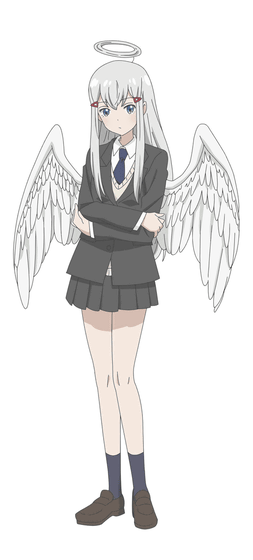
Quetzalcoatl Sassus Sur, the Antarctic Snake
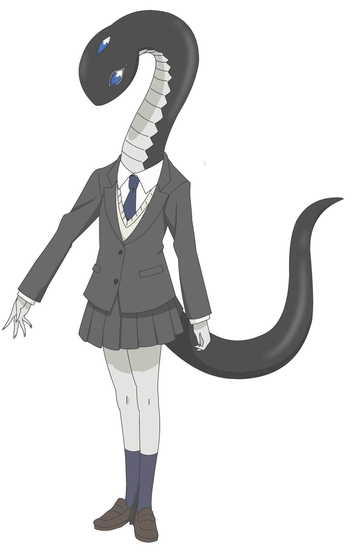
G:
Mr. Oizaki, what was your impression when you talked about the animation of 'Centaur's Trouble'?
Oizaki:
When I read the original, I was overwhelmed by the world view rather than the fact that the high school girls were cute.
G:
I feel like I understand.
Oizaki:
In the case of anime, I don't make it by myself, so I feel like I managed to make it into a shape with the help of Touko Machida, director Konno, and various other people.
G:
It's an original that you can read as much as you want, but are there any points you were careful about when animating it?
Oizaki:
I was overwhelmed with the information about the place where the cover was removed, but I couldn't pick up everything because the number of broadcast stories was limited, so I made a detailed essence while making an appealing part. I tried to reproduce the atmosphere of the world as a whole. When it comes to everything, it's too big to reproduce, so I'd like you to feel the touching part. We hope that you will see the anime as the entrance to the world of the work and read the original after the broadcast is over.
G:
This time, Mr. Oizaki is the 'general director' and Mr. Naoyuki Konno is the 'director'. What kind of work does the general manager do?
Oizaki:
The on-site work is basically done by Director Konno, and I give instructions on the direction when the project is launched, witness a scenario meeting, and witness an acoustic site. Also, it feels like a promotion manager (laughs). I helped with the contest a little, but basically I'm in a position to support if something happens so that Director Konno can do it easily.
G:
This time, I heard from Deputy Editor-in-Chief Inokai of COMIC Ryu that Mr. Murayama, the original author, is also quite involved in what to put in and in what order in the script. Was there a request such as 'I want you to include this number of stories'?
COMIC Ryu Deputy Editor-in-Chief Mikita Inokai :
It was more like a discussion with everyone than a request.
Oizaki:
After all, it is a work with a vast view of the world, so I was asked to finally confirm that 'Is it okay to place this here?'
G:
Is there any story that left an impression on you as long as you can put it out at the beginning of the broadcast?
Oizaki:
It was a ghost story that took time, and the flow around Anomalocaris. There is a difference between manga-like expressions and animation-like expressions, so even if you can understand manga, you may not be able to understand it in the video, so I was impressed by the fact that you exchanged information including detailed words.
Murayama:
After all, there is a difference between how to make manga and animation. In the case of manga, even adjacent frames do not necessarily have to be continuous. Even if something completely impossible happens between frame A and frame B, it can be complemented and read. However, since the animation is continuous, I can understand from an amateur's idea that such a thing would not be possible ...
Oizaki:
As long as there is a time axis, I think that it will be painful if the flow does not go through in a rational way, but depending on the episode or story, when thinking in a rational way, there may be a part that says 'what should I do here?' In such a case, I am working while exploring whether it will be established as a video expression by tracing the original.
G:
This time, 'Centaur's Trouble' is a total of 12 episodes, but wasn't it difficult to choose an episode from the originals published up to 14 volumes?
Oizaki:
Mr. Touko Machida of the series composition read the original, and Director Konno asked me to select based on the first half of volumes 1 to 6 to 7, so Mr. Machida picked it up. Then, I made it with the feeling that I adjusted the order a little later.
G:
I see, the content is up to about 7 volumes. I was reading the original and thought, 'This seems to be difficult to cut in the middle.'
Oizaki:
There are many core stories in the latter half of the part that is currently published, but if you pick them up, you may not be able to understand what kind of work it is, so as I said earlier, 'Anime is From the idea that 'it should be an entrance to get to know the original', I first picked up the first half with the main premise of 'the daily life of girls with slightly different shapes'. On top of that, it is composed of the image of picking up stories that can be used and adding a plus alpha stimulus.
G:
It's not just a matter of making it from the head, it's hard. How was Murayama watching the anime being made?
Murayama:
I was shown a composition plan, but I thought that I was a professional because I chose it well.
G:
In the original, there is an image that reflects a relatively timely topic. From time to time, stories of insanely severe international affairs and wars are inserted, but we return to the school scene where nothing happens. How do you input these topics?
Murayama:
I'm chasing the topics I'm interested in watching TV, but I don't always spend a lot of time doing it.
G:
Various topics have been incorporated, but what are the selection criteria for 'let's put this in, let's do it this way'?
Murayama:
For example, there are amphibians among the people who make up the world, but I wonder what kind of life they are, what kind of thoughts they are in, and what kind of situation they are in. When I want to draw, I feel like drawing at that time. And when I draw it, I want to draw it as a person with the same concreteness or reality as a normal human being.
G:
So that's it.
Oizaki:
When you hear the story, I think it's the 'ultimate everyday system' in a sense. I felt that the fact that the news was about missiles and the international situation was the same as the reality.
G:
I think it would be difficult to express these parts in animation ...
Oizaki:
It's a work that is broadcast on TV, so unfortunately there are many things I can't say or draw, but I'm doing what I can to the point where I can bring out the essence of the original. Manga has a different range of expression due to different media, so that is also an enviable part.
G:
So that's it.
I would like to ask you about Mr. Murayama's past, a little away from the work, but he said that he won the COMIC Ryu's Silver Dragon Award when he was 37 years old, and he had experience as a member of society before that. In an interview with Tokyo Manga Lab, 'In the case of a cartoonist, the editor will take care of you. If you think about it as a job, the editor is the client and the cartoonist is the subcontractor. There is usually no such thing as a job in the world! '
(Everyone laughs)
G:
Furthermore, 'Usually, this is a world where you pay money to entertain and get a job, deliver it while pecopeco and pay a penalty if you are late ... Normally, you will contact us from here and keep track of the progress. I have to report that the editor will contact me. 'When I read this, I wonder what happened when I was a member of society, but it was a tough job. Was it?
Murayama:
Well ... that's right, right? If there was a problem, I got a call at 7 am and said 'I'm sorry' while folding my hips.
(Everyone laughs)
G:
When I read this, I felt, 'Wow, I don't think it's a manga artist's line.' I think that being a manga artist from SE is a great transition, but did you think that you would become a manga artist someday before you became SE? Or did you come across an event that made you want to become a manga artist while doing SE ...?
Murayama:
It's a delicate place. Of course, I used to draw a little before I did SE, but it was a vague story about 'I wish I could get used to it.' However, due to various changes in the administration in 2009, I decided to retire early. By the time I retired, I was thinking 'let's become a manga artist' to some extent, and I didn't expect to get a serialization soon, so I saved money and prepared.
G:
However, the serialization actually started in a blink of an eye. Initially, it was supposed to take longer.
Murayama:
I thought it would take a couple of years. Experience shows that it's dangerous if the savings are less than 1 million, so I thought it would be nice if I could win some prizes by then, draw a one-shot, and finally get a serialization in a year or two. rice field.
Oizaki:
Some people say, 'I draw manga as a hobby,' but I have the impression that I became a manga artist as much as possible.
G:
It feels very professional from the beginning.
Murayama:
That's not the case, the manuscript is also slow. …… But the good thing about manga artists is that the work they do doesn't cause bugs.
(Everyone laughs)
Murayama:
Even if you make a mistake in drawing, it doesn't mean that you can't see what was posted, so it doesn't hurt your heart.
G:
My previous job had a heartache ...
Murayama:
It will hurt.
Oizaki:
I hear that SE is a work that cuts the spirit.
Murayama:
Also, I can't sleep. Compared to a manga artist, I can do my job to the very limit. For example, a cartoonist cannot draw a straight line and a curved line unless he can distinguish them, so he must take a rest, but with SE, he said, 'I continued to work even if I couldn't understand the color due to fatigue.' There is also.
G:
During the SE era, he practiced painting by observing and drawing people sitting face-to-face on the commuter train. Are you still observing?
Murayama:
That's a bit of a problem, because people aren't walking in Ibaraki.
G:
Yeah (laughs)
Murayama:
For example, landscape photography ... I can't take landscape photos of people walking. So, when I look back at the work, I think 'people aren't walking, it's no good', but the photos I took aren't walking ... This is a drawback of living in the countryside.
Oizaki:
I see ... Certainly, there aren't many people even in the daytime.
Murayama:
It's dressed up as a fashion magazine, and when it comes to tangible things, the manufacturer's intentions come in quite a bit. In that case, I wouldn't know until I actually saw the clothes of the child.
Oizaki:
Certainly not everyday.
G:
The story goes back to the past, but on the official website of Ohta Publishing, 'Mushroom Human Marriage' publication commemoration Kei Murayama Long Interview 'What kind of society would you run if fungi were in the shape of humans?' In ' ', I mentioned that my major in school was molecular biology. Why did you choose molecular biology?
Murayama:
I thought it would be interesting to create a living thing by playing with 'bio' or genes. Also, when we were in high school, it was just a bubble, and we could predict that it would be possible to play it soon, so when we graduated from college, it would be difficult to get a job. So I went to Bio, thinking that I wouldn't have a job if I didn't do practical things. When I got a job at a company, I thought it would be better to learn useful techniques, which probably wasn't too far off. But there is also a miscalculation ...
G:
miscalculation?
Murayama:
When I handle experimental animals, I enter a clean room that blocks bacteria, but at that time I cover my whole body and wear rubber gloves. However, I get skin irritation with rubber gloves.
G:
What!
Murayama:
I can't stand this anymore ... but if I don't put it in, it won't be an experiment. I was able to make some predictions, but that was the sweetness of high school students. I thought I was looking wisely, and my feet were neglected.
Oizaki:
If you don't know until you actually put it on, you can't help it ...
G:
As with the story of molecular biology and history, I had the image that 'this author must be erudition' just by reading the original. Did this knowledge make use of what you have accumulated at school? Or did you research hard to draw a work like 'Centaur's Trouble'?
Murayama:
Both, basically I like books.
G:
I'm in the middle of a series, but how long have you read the book?
Murayama:
I'm working most of the time when I'm awake, so I haven't read much about it, but I buy about 1 million yen a year.
G:
This is also a question about the past, but what made you decide to do doujinshi activities?
Murayama:
When I decided to publish my work, I couldn't publish it in a commercial magazine suddenly, so I was the same person. Just before I became a member of society, when I was in graduate school, I finally got the internet. However, the internet at that time was slow, tele-hodai, and the capacity of the homepage was small. At first, it was 2MB, such as Geocities.
G:
The most popular storage medium was the floppy disk, which was 1.44MB.
Murayama:
That's why I was searching for a douujinshi and found 'Commitia'. There are other spot sales events, but most of the time, the parody douujinshi is the main thing, but the committee is only the original, and the scale was large to some extent.
Oizaki:
Have you ever been invited by a friend of doujinshi?
Murayama:
I didn't have a manga, but I had a friend who wrote a novel. The reason for the novel is that even with a small amount of homepage capacity, if it is text-based, it will fit in quite a bit.
G:
It's a back calculation from the file size (laugh)
Murayama:
At that time, there were people who were drawing web comics, but they were heavy and took a long time to load ...
G:
It was unrealistic at that time ...
Oizaki:
You can see it slowly from the screen (laughs)
G:
So could you have been a novelist if the internet remained slow?
Murayama:
I felt that the novels were tightly categorized and unlikely. For example, pure literature is separated from pure literature, and detective novels are separated from detective novels, so you have to write something that suits that genre. However, manga doesn't have many boundaries.
G:
So that's it. You're thinking about that as well.
Murayama:
Speaking of retrofitting, it is retrofitting.
G:
Next, I would like to ask Fumitoshi
Oizaki:
Originally, I liked watching anime, special effects, and drawing pictures. But other than that, I wasn't good at it, I couldn't exercise, and I couldn't study much, so I vaguely thought, 'I wish I could do a painting job in the future.' When I chose club activities in junior high school, I was wondering what to do because exercise was not good, but there was an 'art club'. The seniors there were the fujoshi people nowadays (laughs), and at that time, without knowing anything, I went inside the older sisters and did a lot of fun.
G:
Oh, I see.
Oizaki:
When 'Captain Tsubasa' and 'Saint Seiya' were receiving it, it was a work that boys also liked, so we talked together and wanted to work on painting in the future. I went out and was told, 'If so, I have a job called an animator.' So, I researched how to become an animator and went to a painting class to 'learn more about painting.' I'm from Oita, but I was lucky enough to find out that there is an art and music high school, so I studied a lot to get recommendations.
G:
It's amazing, since I was in junior high school.
Oizaki:
I was lucky enough to find something I wanted to do, so I decided to aim for it. So, usually, I'm aiming for an art university from an art high school, but I said, 'I want to do anime quickly, so I'm going to a vocational school.' (Laughs) 'Why don't you go to art school !?' I was often told, but I refused and went to a vocational school, saying, 'It's okay. It's a detour.' If I think about it now, I think I could have gone because I could have done something different, but at that time I just wanted to do an anime job, and I couldn't help doing it, so I went straight ahead.
G:
That means that you have fulfilled your childhood dreams.
Oizaki:
There was also nothing else I wanted to do. Other than that, I like architecture, and when I was in elementary school, I longed for a single-family house because I lived in a company house. I was drawing a picture while delusional. If I hadn't come across anime, I might have been there.
G:
Life was decided by watching anime.
Oizaki:
That's it. It's scary (laughs)
G:
(Laughs) By the way, I think Mr. Murayama answered in a past interview that he didn't read much manga when he was little.
Murayama:
I didn't read that much when I was in elementary school. It doesn't mean that you can buy it, and that there is no place to read it. Weekly Shonen Jump is also from around junior high school students.
G:
However, I think that becoming a manga artist meant that you had an encounter with a manga that triggered you somewhere. What kind of work was it?
Murayama:
When I was in high school, I came across a hardcover called ' Gyoros Emperor's Sound Creation Machine ' from Fusion Product. I wanted to draw something like this in an art-like manga drawn with a round pen using very good paper and with a Mobius-like touch.
Gyoros Emperor's Sound Creation Machine | Hiroyuki Kato, Keisuke Goto | Books | Mail Order | Amazon
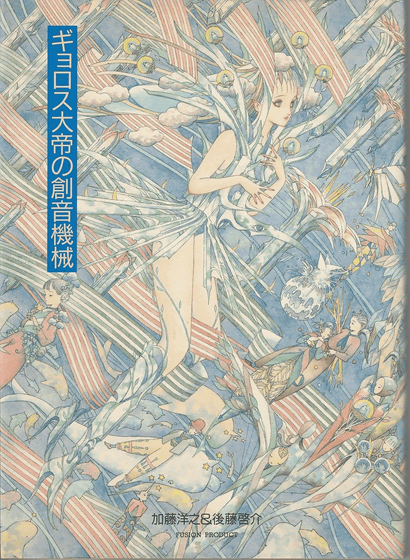
G:
What other works did you read?
Murayama:
I liked 'Nausicaa of the Valley of the Wind'. That was also very popular in all classes.
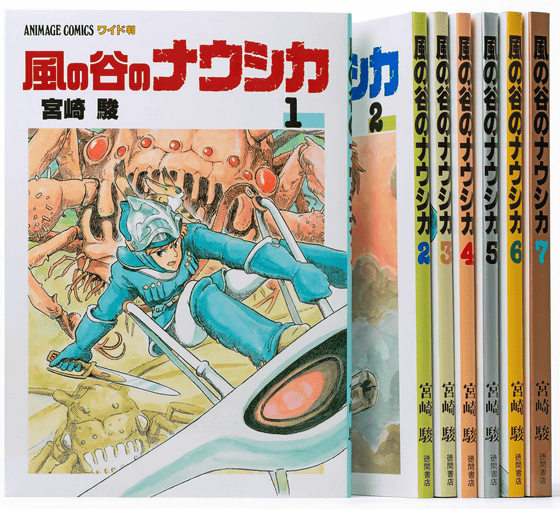
Oizaki:
Now, the name of Nausicaa has come out, and it looks really good.
Murayama:
After that ... Going back further, it becomes something like the 'Norakuro' that my father had. However, I was greatly influenced by Mitsuteru Yokoyama's 'Sangokushi'. The part is that you can't understand even if you stick to the screen too much. The characters of Sangokushi Yokoyama have similar faces, but the story is very easy to understand. The frame isn't very elaborate, but the reason why it's interesting to understand the story is that the amount of information is tightly squeezed.
G:
So that's it.
Murayama:
In the analysis of American comics, I have read that the reason why American comics are so good at drawing that Japanese manga looks like graffiti is because the background is exactly included. In short, the amount of information is too much, it is difficult to read even in action scenes where the tempo should be good, and the tempo is bad. I refer to such information.
G:
Also, I have the impression that you are watching a recent anime, but how do you make time to watch the anime?
Murayama:
You can watch anime while working (laughs)
G:
(Lol)
Murayama:
There are many things like playing a movie.
Oizaki:
I'm the type who can't 'see while watching' because my eyes are inevitably caught in the video (laughs)
Murayama:
However, there are both movies that make you look at the screen while watching, and movies that make you lose interest. I really like '
G:
It seems that you are watching it on TV, but are there any works you saw at the movie theater?
Murayama:
I see ' A Silent Voice ', ' Your Name. ' And ' Shin Godzilla '.
G:
It means that you are firmly holding down the major points. How about Mr. Oizaki?
Oizaki:
Recently, I went to see ' Lu Over the Wall ' directed by Masaaki Yuasa , which I was interested in as an animation expression. While thinking that the expressive power of Director Yuasa was purely amazing, I was able to see the drawing technique using Flash without any discomfort, but I thought it would be difficult because I couldn't help but compare it with myself.
G:
(Lol)
Oizaki:
When I saw the anime work, it became like a rush check (laughs). Also, while looking at the credits, people I know are participating, or is such a company participating? Even in TV animation, you can understand the situation on the other side of the screen just by looking at the opening and ending credits, so rather than just enjoying it, I thought, 'Oh, this work is made in this state.' I got it.
G:
Oh, I see.
Oizaki:
It wouldn't bother me if it was a work that had nothing to do with me and the environment, like Disney and Pixar. However, when I look at the making, it may be a little dented (laugh)
G:
What are the factors that make you dent?
Oizaki:
First of all, the environment you are creating is very luxurious, isn't it? It's natural (laughs), but I think it's good that all the environments are prepared specifically for what to do to improve the work. There are a lot of great Japanese animators, but I can't concentrate on my work because of the environment and financial reasons. Recently, the issue of wages in the industry has become a hot topic, but I wondered if Disney, Pixar, etc. are in a completely different place. Of course, I think I have another problem.
G:
surely…….
Oizaki:
Even if it's not as much as Disney or Pixar, I have to concentrate on one work and create an environment where I can do what I want to do ... I think about various things while watching the making video.
G:
Does Mr. Murayama get dented when he knows the production environment of other people?
Murayama:
I don't have that kind of thing. It's no different from a novelist writing on a manuscript paper. However, I don't like the lines drawn on a PC because they are too beautiful, so I use a pen to draw them on paper and capture them.
Oizaki:
Is it a digital manuscript when uploading?
Murayama:
It's easy, so it's digital. I'm not good at sticking tones. I know I'll do that, but it's just a hassle. Managing the tone itself is also difficult. However, what you see on the screen is a little different from the real thing, so there is a bit of a toothache there.
G:
So that's it. Regarding the design, there was a story that 'the design should be minor updated so that it does not become a very old-fashioned pattern'.
Oizaki:
From the reader's point of view, the manga artist was accustomed to drawing and the time passed, so I was reading with the recognition that the picture would change naturally, but do you feel like adjusting that?
Murayama:
'Don't get into a habit'. If you do it with your own habits, your habits will become stronger and stronger in a strange direction, so I copy anime and so on. However, a cartoon picture is deformed, but the principle of deformation differs from person to person, so if you copy it without understanding the principle, your hand habits will not be corrected, just imitate it like a photograph. I will just be there.
G:
thank you. Finally, I would like to ask one question each. First of all, Director Oizaki, depending on the work, there is something like 'It's like a run-up until the story, so I want you to see that much anyway', but in the case of 'Centaur's trouble', whether you are addicted or not, here Is there anything you would like to see?
Oizaki:
In the case of this work, the time axis is not set in order from the first episode, so it is okay if you look at it from the middle, or if you look at the later story first and then go back to the previous story It's okay.
G:
Even if you missed it halfway, it's okay to see it from episodes 6 and 8.
Oizaki:
To put it simply, 'I want you to see everything' (laughs), but it's not designed to say 'I didn't see it at first, so I don't understand at all!', So I think you can see it with confidence. Of course, there are times when I explain the origin of this world at the beginning, but there are many stories that I can enjoy without knowing it.
G:
Next, Mr. Murayama, please tell us something you would like to tell the reader that the 15th volume was released on July 13th.
Centor's Trouble 15 (Ryu Comics) | Kei Murayama | Books | Mail Order | Amazon
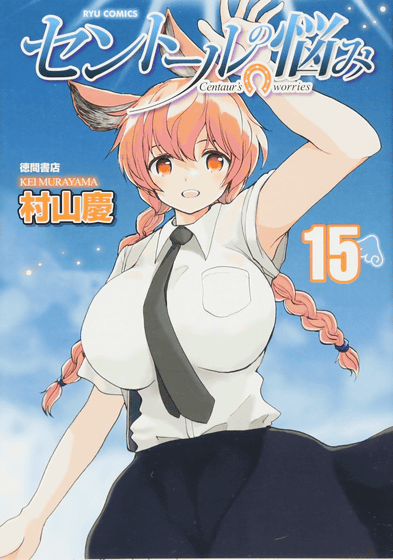
Murayama:
It's a vague thing, but thank you for your continued support (laughs) There is no such thing as running out of material, so don't worry!
Oizaki:
It's hard to say that.
G:
I'm also a fan, so I'm really looking forward to it. Thank you for a long time today.
© 2017 Kei Murayama / Tokuma Shoten / Beyond City Thought Education Committee
Related Posts:







